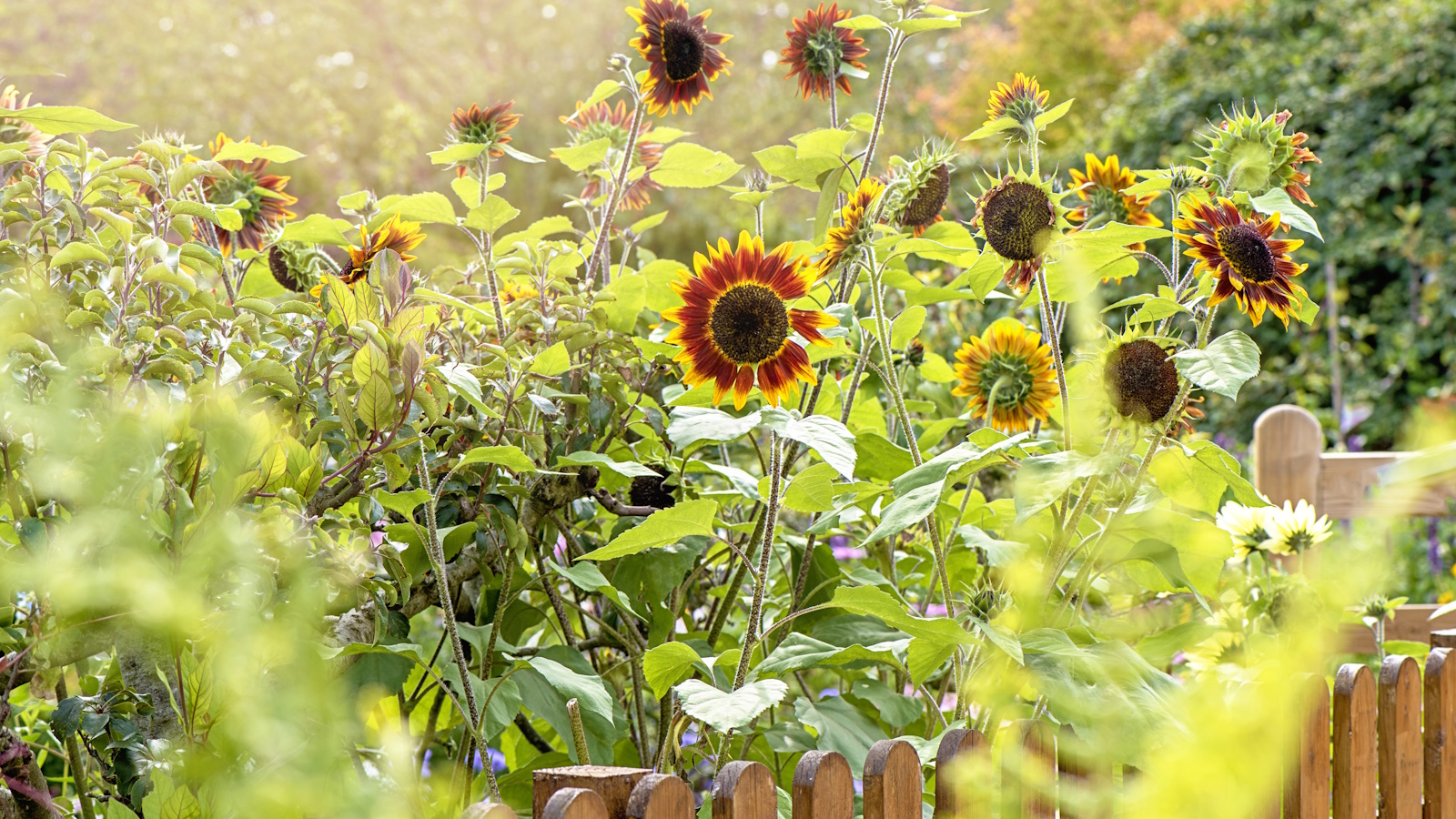
Whether grown in backyard borders, flower patches, pots or expansive fields, sunflowers can always be relied upon for their joyful color. While they are most known for producing yellow daisy-like flowers, sunflowers can also be grown in white, red and even green. Whatever your preference, there will be a sunflower to suit your tastes.
Annual sunflowers are some of the easiest flowers to grow from seed, germinating quickly and blooming within 11 to 18 weeks, depending on the growing conditions. While learning how to grow sunflowers is never a problem, knowing how to keep sunflowers blooming for as long as possible in the summer is important.
As a professional gardener, I have grown many different sunflowers when working in the UK and Europe. Over several years, I have learned from sunflower successes and failures, and here I share a few simple steps that can help to prolong the sunflower show in your yard.
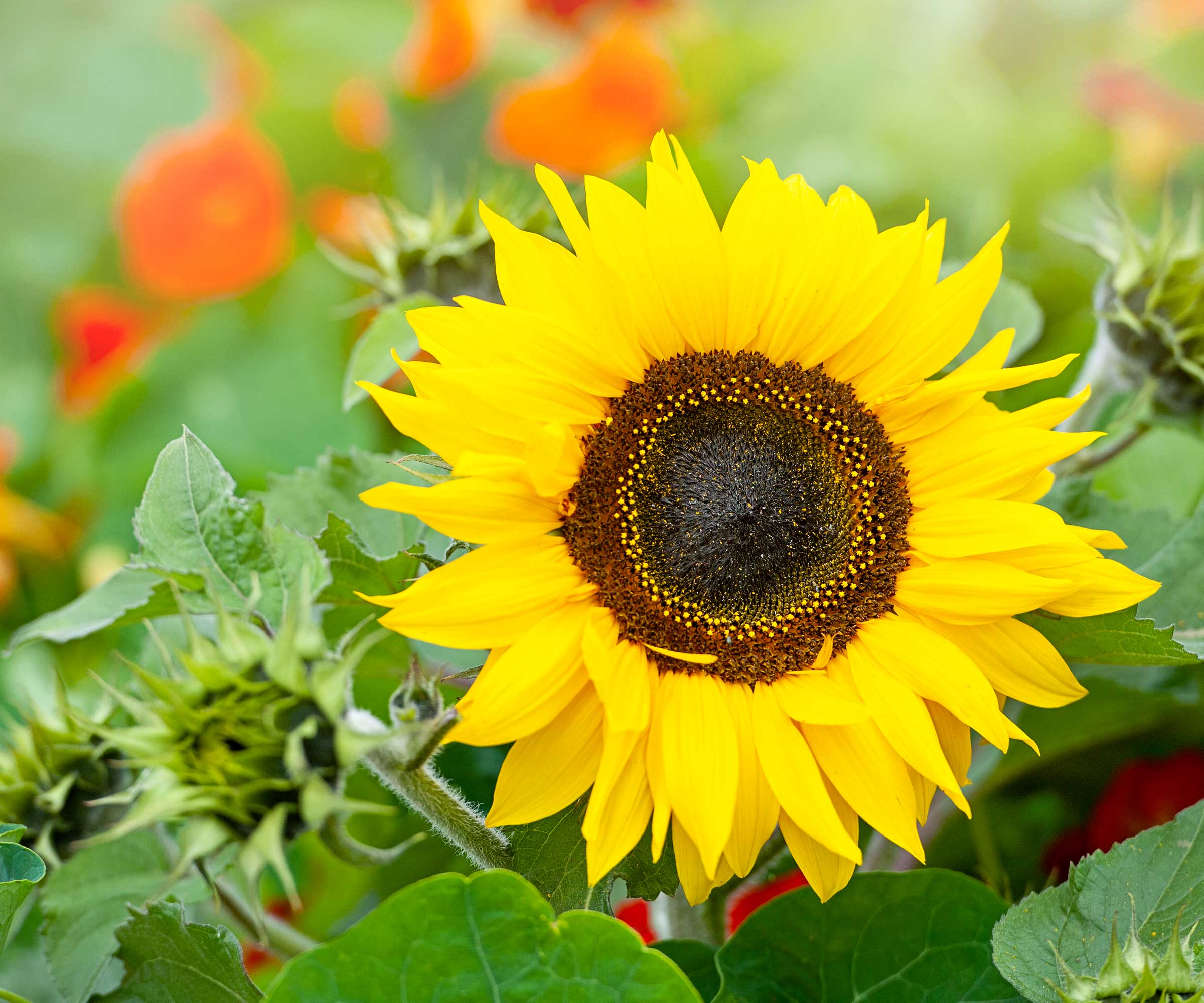
How to keep sunflowers blooming
One of my favorite sunflower varieties is 'Italian White', available from Amazon, which has large, pale yellow blooms that are hard to beat. I grew this variety last summer while working as a gardener in the Italian countryside, and it more than proved its worth both in the garden and when placed in vases indoors. This shorter, bushy variety can be grown from US hardiness zone 3 to US hardiness zone 8, and by following a few simple care tips, I managed to keep my sunflower plants blooming all summer long. The following lessons can be applied to any sunflower varieties that you grow, maximizing flower production until the temperature drops in the fall.
1. Deadheading sunflowers
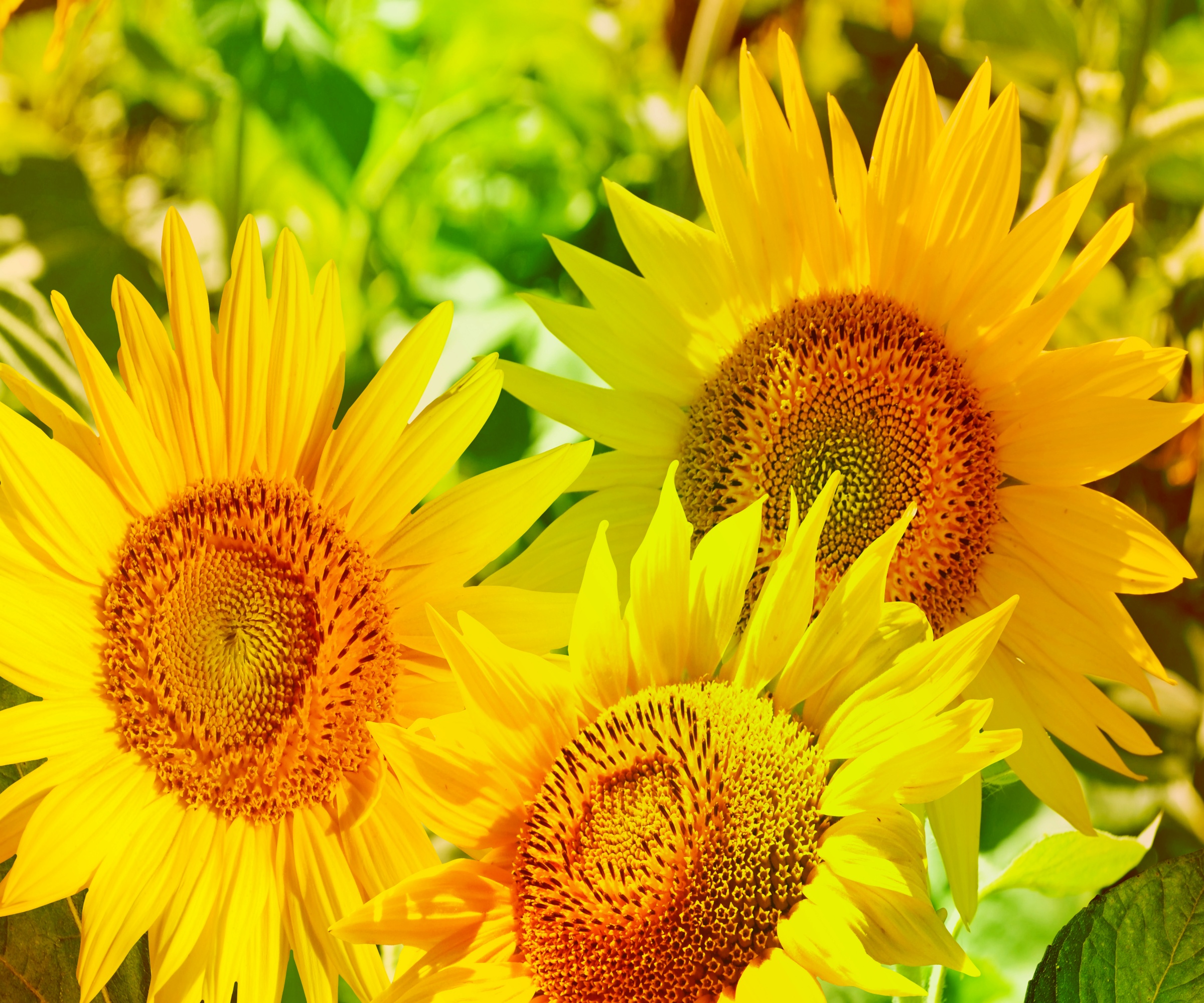
For vibrant, fun flowers to grow in your yard, few plants can complete with sunflowers. Many of us will have memories of growing these yellow blooms atop giant stems - or what seemed giant as a child - and they never fail to bring a splash of sunshine and joy wherever they are planted.
Learning how to prune sunflowers is relatively straightforward, but your approach will differ depending on the variety you grow. Annual sunflowers - which tend to have one tall stem with a single large flower - do not need deadheading. Instead, leave the faded flowers to go to seed, and enjoy watching the birds pick and dine on these nutritious snacks.
Perennial sunflowers, however, do require deadheading. These varieties are often shorter, bushier, and will have multi-flowering stems. As mentioned already, 'Italian White' is a shorter, perennial variety that I grew last year in Italy. This variety benefitted from regular pruning during July, August and September, cutting back faded blooms as you would any other repeat-flowering plant. Cutting down to a leaf node as the petals begin to fade and fall encourages the plant to produce more flowers late into the season.
Always remember to use clean, sharp tools, such as these Felco pruners, available from Walmart.
These gardening shears are heavy-duty, making light work of your pruning jobs. They will easily cut through branches up to 3/4 inch thick.
2. Fertilizing sunflowers
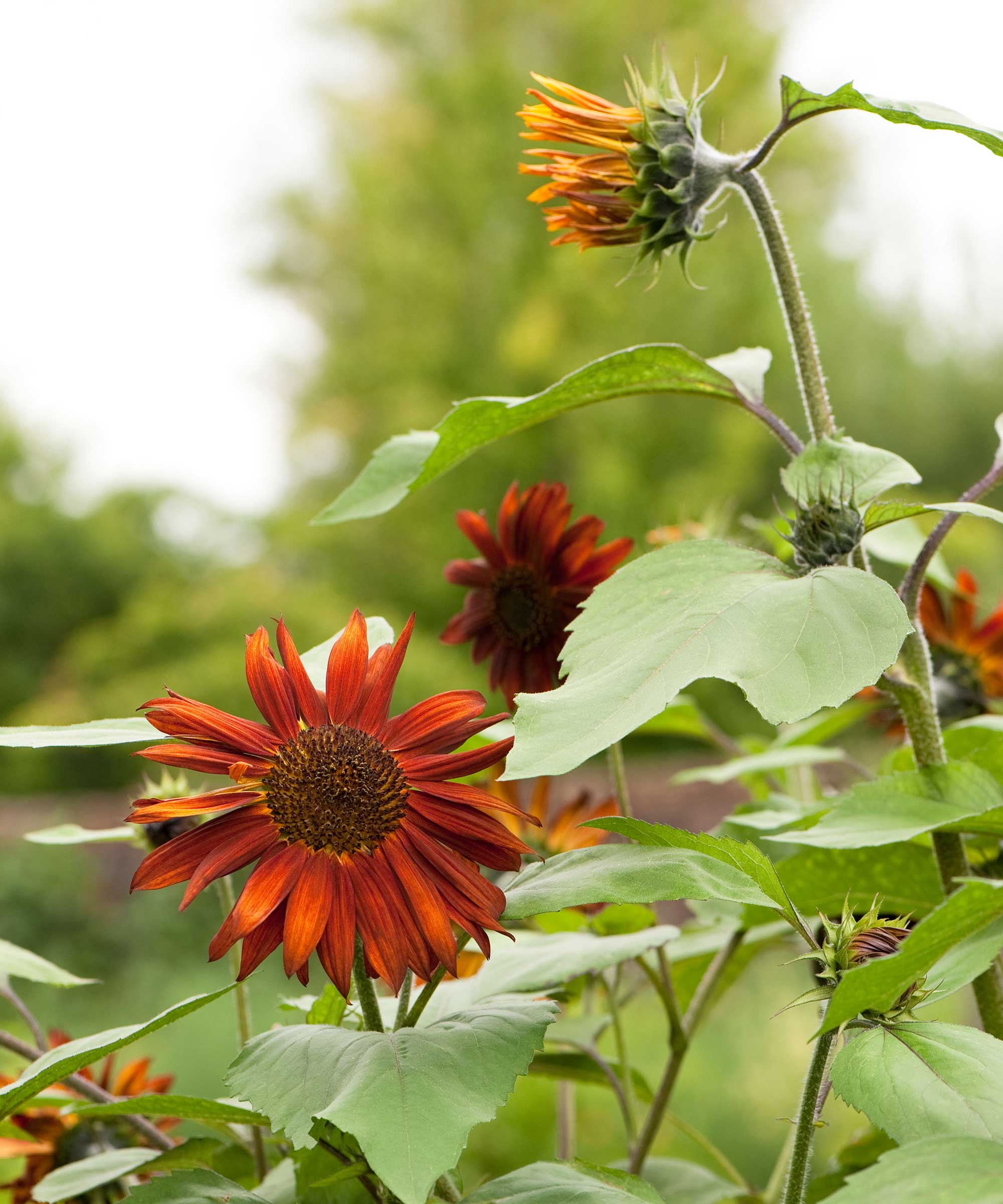
In my experience, annual sunflowers tend to grow just fine without the need for any fertilizer, accessing the nutrients they need from most garden soils. Feeding plants when it is not necessary is a common fertilizing mistake that you should avoid, and it can often have little or even negative consequences.
It is a good idea to mulch borders in the fall and winter months, which should prepare your soil for the following year and remove the need to feed any annual plants. If you are ever unsure about the quality of your soil, it is a good idea to use a rapid soil test kit, available from Walmart, that can quickly reveal if your borders are depleted of any nutrients.
Perennial sunflowers can benefit from feeding during the growing season. I would suggest fertilizing your plants with a nitrogen-heavy feed earlier in the season, to encourage plenty of strong, bushy foliage growth, and then feeding with an organic bloom booster fertilizer, available from Walmart, during the summer months.
Bloom booster feeds tend to have a high phosphorus level, which is the middle number when you are looking at the plant fertilizer numbers, and will encourage fruit and flower production late into the season.
This fertilizer will promote more blooms in your borders late into the summer. Feed every two weeks for the best results.
3. Supporting and staking sunflowers
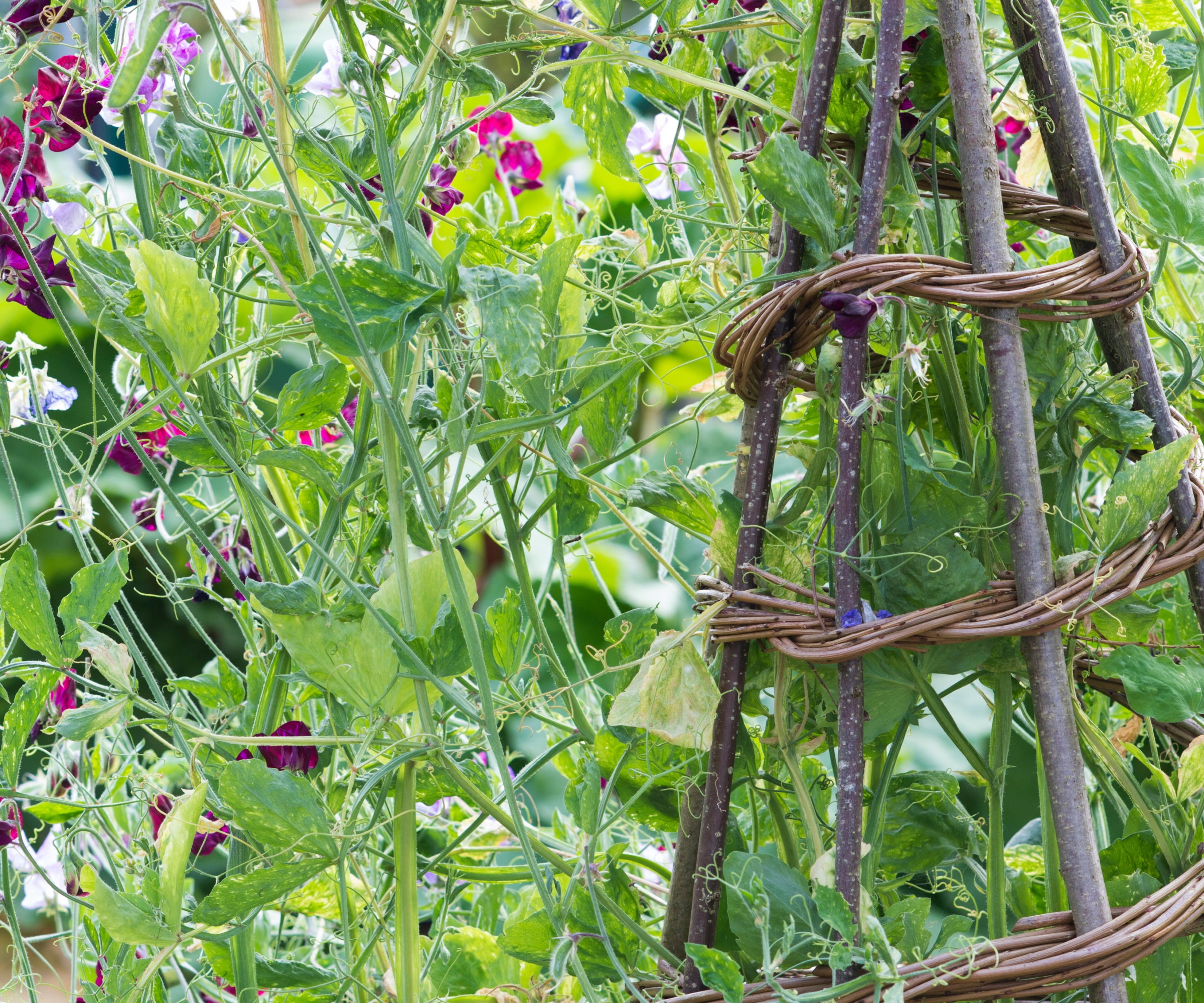
For any sunflower variety, it is essential to provide support for your plants. Many annual sunflowers can reach up to 10 feet tall, so ensuring that you use canes, sticks or plant supports to provide stability can help to extend the life of your plants. All it takes is one strong gust of wind and the life of your sunflowers will sadly be cut short - this has happened to me one too many times.
One idea to try for short varieties is to learn how to build hazel plant supports, which will create a subtle, artisanal aesthetic in your yard. I would advise doing this earlier in the summer when the plants are still growing, as they will grow through the structure which will then give them support.
Whether you use bamboo canes or something more creative, always keep your ties loose, as this will allow your sunflowers to move and grow but still provide a moderate amount of support. Garden twine is available to buy from Walmart.
These reusable garden supports are made of metal, helping your sunflowers, cosmos and dahlias to stand straight, whatever the weather.
FAQs
Can I compost sunflowers after they have finished blooming?
Yes, you can dispose of spent flowerheads, stems and roots by adding them to your compost heap. Be sure to scatter the seeds for the birds, who will be grateful for this tasty snack in the fall. I always cut up any chunky stems into smaller pieces, to help speed up the composting process.
Always remember to save a handful of sunflower seeds to use the following year, storing them in a cool and dry spot. It is easy to learn how to harvest sunflower seeds, just be sure to do so before the birds feast on them. Once you have a small amount for yourself, leave the remainder for wildlife in your yard.







